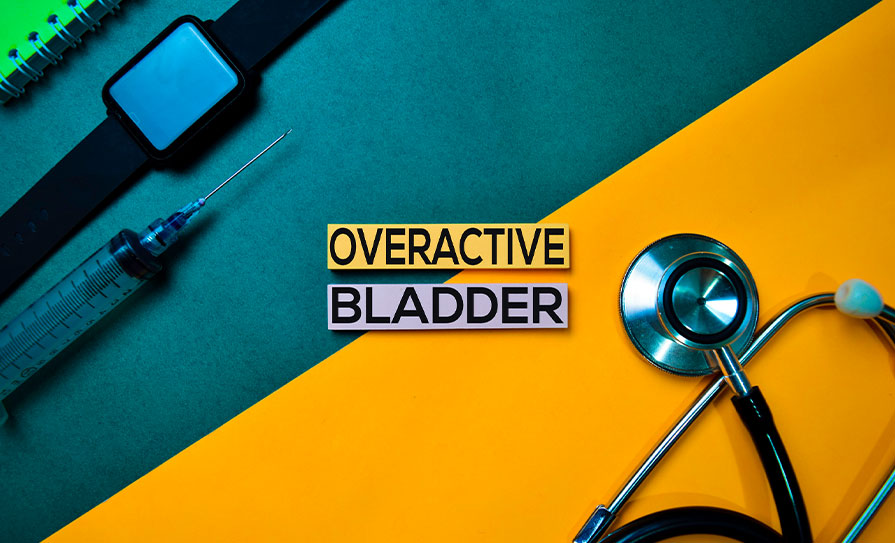Bladder leakage is a common issue in women, causing a significant impact on quality-of-life, but pelvic floor muscle training can dramatically improve or resolve symptoms.
We all know the dreadful feeling of needing the bathroom suddenly to empty the bladder while having coffee with friends or while out shopping and how humiliating and embarrassing it is to be caught short and leak urine. Imagine the awful feeling with an overwhelming urge to empty your bladder and not making it to the bathroom on time. Worse still is the fear of not being able to control stool or gas. New mums (and some not-so-new mums) up and down the country are dealing with these awful problems. Many hide the problem and are too embarrassed to deal with the issues. Women wear incontinence pads, reduce their sexual activity, their exercise levels, and their social life too.
However, help is available to give them back their freedom without fear of bladder and bowel leaks, for normal sexual function (to be able to orgasm or climax correctly), and to ensure optimal bowel and bladder emptying and solve constipation.
Progressive pelvic floor muscle training is recommended as a first-line treatment for incontinence (CG171 NICE Guideline 2016). Two-thirds of women with any type of incontinence who have pelvic floor muscle training see improvements or cure, with 75 per cent of women reporting resolution of symptoms such as episodes of incontinence (National Institute of Research doi: 10.33310/signal-000702). That is two-out-of-three women that will be cured of incontinence with pelvic floor muscle training and the third woman will be improved. This is also reflected in women and men for faecal incontinence, constipation, pelvic organ prolapse, and sexual and erectile dysfunction.
What about pelvic floors and mothers? What are the pelvic floor problems that can arise and that can be resolved?
There are hormonal changes that occur during pregnancy and in the post-natal period that affect the pelvic floor muscle function. In the pelvis and in the pelvic floor, hormonal changes occur that cause laxity of the pelvic soft tissues. The bladder and bowel muscles themselves can be affected with the hormonal changes too. Sexual function can be affected too with the hormonal changes, there can be pain, and reduced libido.
Pelvic organ prolapse can occur (the pelvic organs, the bladder, rectum, womb, and others coming down in the pelvic floor). Keeping the pelvic floor muscle function in the normal range of function is so important before, during, and after pregnancy and it will prevent and treat these bladder, bowel, pelvic prolapse, pain, and sexual problems.
When talking to patients about this, be clear and give them the information they need to understand what is happening with their body. If they are a complete beginner and don’t have a clue what a pelvic floor is or where it is, talk about where these muscles are located in the body. For example: Firstly, think of the area of your body between your waist and the top of your legs. This is where your pelvis is located, think of it as a basin-shaped region. Your tummy area is where your core muscles are located. The pelvic floor muscles form the base of the pelvic basin and are really the underneath part of your core. The pelvic floor muscles hold up or support your organs correctly in the pelvic cavity. These organs are your bladder and your bowel, and in women your vaginal walls and your womb too.
It can take a three-to-six-month period of time to get the bulk, endurance, fitness, movement, and automatic function working in the normal range
How important are they? The pelvic floor muscles are among some of the most important muscles in the body because they are responsible for the normal filling, storing, and emptying of our bladder and our bowels. They are important too for normal sexual function (to be able to orgasm or climax correctly) and to hold our pelvic organs in place correctly and to guard as pelvic organ prolapse, the organs coming down (the bladder, bowel, and womb in women). If the pelvic floor muscles are not in the normal range of function, then our bladder and our bowel may not fill, store, and empty urine and stool correctly. If we are not eliminating our waste material correctly we can become unwell, with urinary tract infection or obstructed bowel or constipation.
Why are they important? If our bladders and our bowels are not working correctly or if we have pelvic organ prolapse, or sexual dysfunction our quality-of-life is affected. We cannot live our lives, go to work travel or exercise without worries about bladder or bowel leaks or we worry if we night need the bathroom urgently to empty our bladder or bowel. We won’t feel well if we can’t empty or bowels or our bladders and we might not sleep well either and our energy levels will be poor, and we will feel anxious. We might not be able to run around after our toddlers, without the fear of a leak too.
How do we exercise the pelvic floor muscles? We need to train our muscles to be in the normal range or function. This involves a series of exercises and training routines. It can take a three-to-six-month period of time to get the bulk, endurance, fitness, movement, and automatic function working in the normal range. The bladder and the bowel muscle themselves need to be trained too with lifestyle changes and some other exercises. The exercises need to be targeted to the different muscle fibres, and the person needs to progress them and keep doing them for life (at a maintenance dose, but much more frequently in the beginning). It is not a quick fix, but it works, and it is so worth it. It is so much easier when the muscle is in the normal range to maintain then – it is harder for sure in the beginning, but it is possible. Post-natal mothers also need to train their abdominal muscles, training the pelvic floor will help zip up the tummy and any gap or muscle separation (diastasis rectus abdominal muscle: DRAM), and is done as part of the ‘nose to toes’ approach that is needed in getting the pelvic floor fully trained and back in shape after giving birth.
What issues can pelvic floor dysfunction pose for women and mothers and sex?
Pelvic floor muscle dysfunction can affect mothers and women from a pain, climax, and arousal side of things.
Men and pelvic issues
Many people might think it is just women that have a pelvic floor, but there are many benefits for men too for having a strong pelvic floor, so what are those? Men also need to train their pelvic floors for exactly the same reasons as women. Men too unfortunately get the very same bladder, bowel, and sexual dysfunction as women.
What age should people be starting pelvic floor exercises?
Is it ever too late and should it be done before or during pregnancy (best from 20 weeks in first pregnancy) and the menopause?
The largest group of people that have pelvic floor muscle weakness and bladder leakage is mothers in their 20s, 30s, 40s, 50s, 60s, and 70s. Before or during or after pregnancy and menopause are great times to start training the pelvic floor muscles, but it will need to be done sooner if a person has any bladder or bowel problems.
Home pelvic routines are an online way of doing the pelvic floor muscle training, without even having to come and see the pelvic physiotherapist. They are an affordable, convenient and quick way of getting pelvic floor muscles trained, in privacy, using any device, phone, tablet or laptop. All someone needs is an email address to log on and create a password-enabled account. They are available to purchase from our platform, https:// courses.homepelvicroutines.com/ or from our website www.ippm.ie. I have seen thousands of women and men through my hands every year, in the last 25 years, with pelvic floor muscle dysfunction. My at-home pelvic floor muscle training programme, Home Pelvic Routine, is designed so that even the weakest person can do this programme of training and routines successfully, will feel that they are doing the exercises correctly, and will be progressed through the exercises that are needed, at the right pace for optimal cost-effective, convenient, and quick training results.
How long can it take to see the benefits? In one week, they will see improvements, but it can take three-to-six months to fully train the pelvic floor muscles and then the patient needs to keep up a maintenance amount up for life.
Conclusion
In summary, if a woman is thinking of starting a family, if they are pregnant or post-natal, no matter how long since they had their child or children, training their pelvic floor muscles is an essential element of preventative therapy for optimal pelvic health. Live your best life without fear of bladder leaks or other pelvic floor problems. Please send me any questions or queries to aoife@ippm.ie.
MS AOIFE NI EOCHAIDH, Chartered Physiotherapist, Clinical Specialist Physiotherapist, Women’s and Men’s Health and Continence, Bon Secour Consultants Clinic, Galway










Leave a Reply
You must be logged in to post a comment.